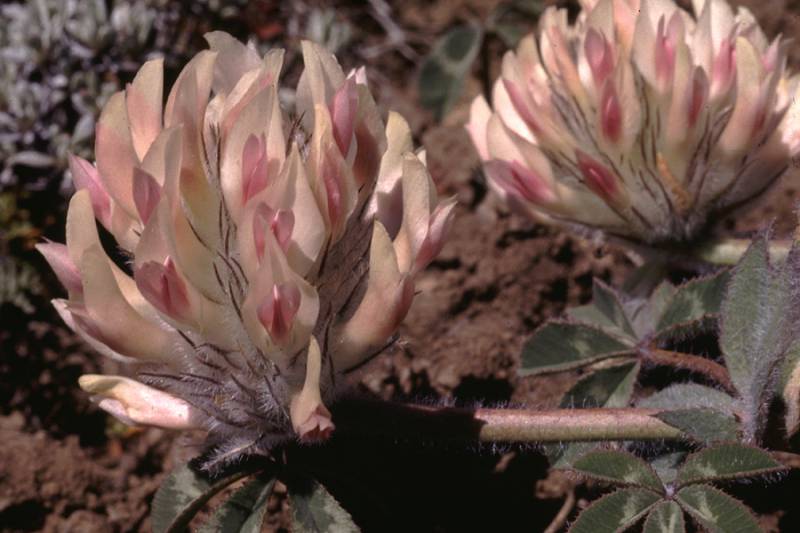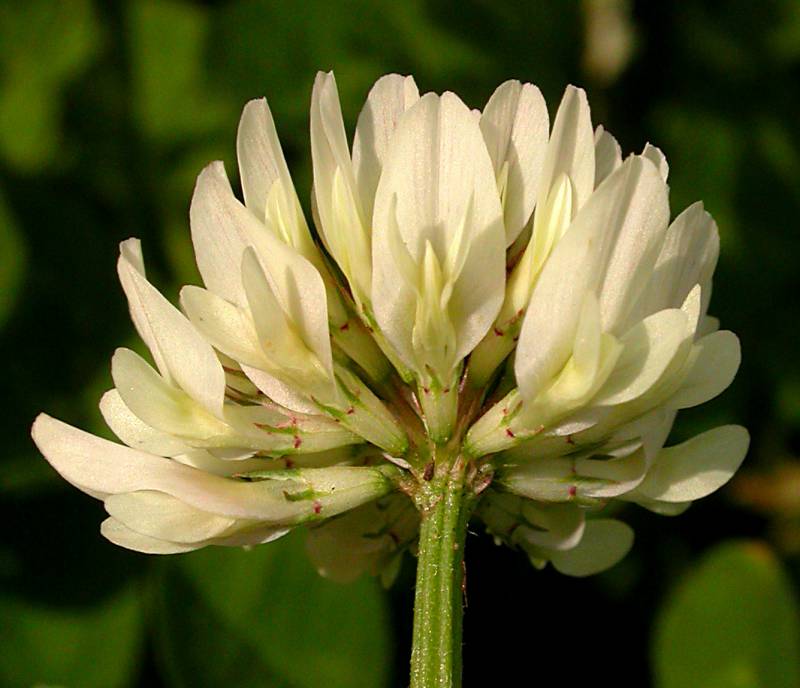Trifolium macrocephalum
Trifolium repens
big-head clover, large-head clover
Dutch clover, white clover
Leaves with 5-9 leaflets, these rather thick, oblanceolate to obcordate, 1.5-2.5 cm. long;
stipules ovate-lanceolate, their margins lacerate.
Leaves trifoliate, long-petiolate;
leaflets obovate to obcordate, 1-2 cm. long, finely serrulate;
stipules attached around the petiole most of their length, the free portion acuminate.
Heads mostly solitary and terminal, 3-5 cm. broad and long, the peduncles exceeding the leaves;
flowers 22-28 mm. long, pale pinkish to rose-pink, spreading to erect, the pedicels very short;
calyx 2/3 as long as the corolla, the 5 teeth awl-shaped, plumose, many times as long as the tube.
Inflorescence of many-flowered heads 1.5-2 cm. long and broad, on long, axillary peduncles;
flowers pea-like, 5-9 mm. long, white to cream, often pinkish-tinged; pendulous on pedicels 1-5 mm. long;
calyx glabrous, half the length of the corolla, the 5 teeth awl-shaped, half the length of the tube;
banner erect.
Pod 1-seeded.
Pod 1-3 seeded.
Trifolium macrocephalum
Trifolium repens
- Local floras:
BC,
CA,
OR,
WA
- Local Web sites:
CalFlora,
CalPhotos,
Flora NW,
PNW Herbaria,
Turner Photog.
WildflowerSearch
iNaturalist (observations)
USDA Plants Database
- LBJ Wildflower Center
- SEINet
- Plants of the World Online
- Encyclopedia of Life
- Wikipedia
- Google Image Search



